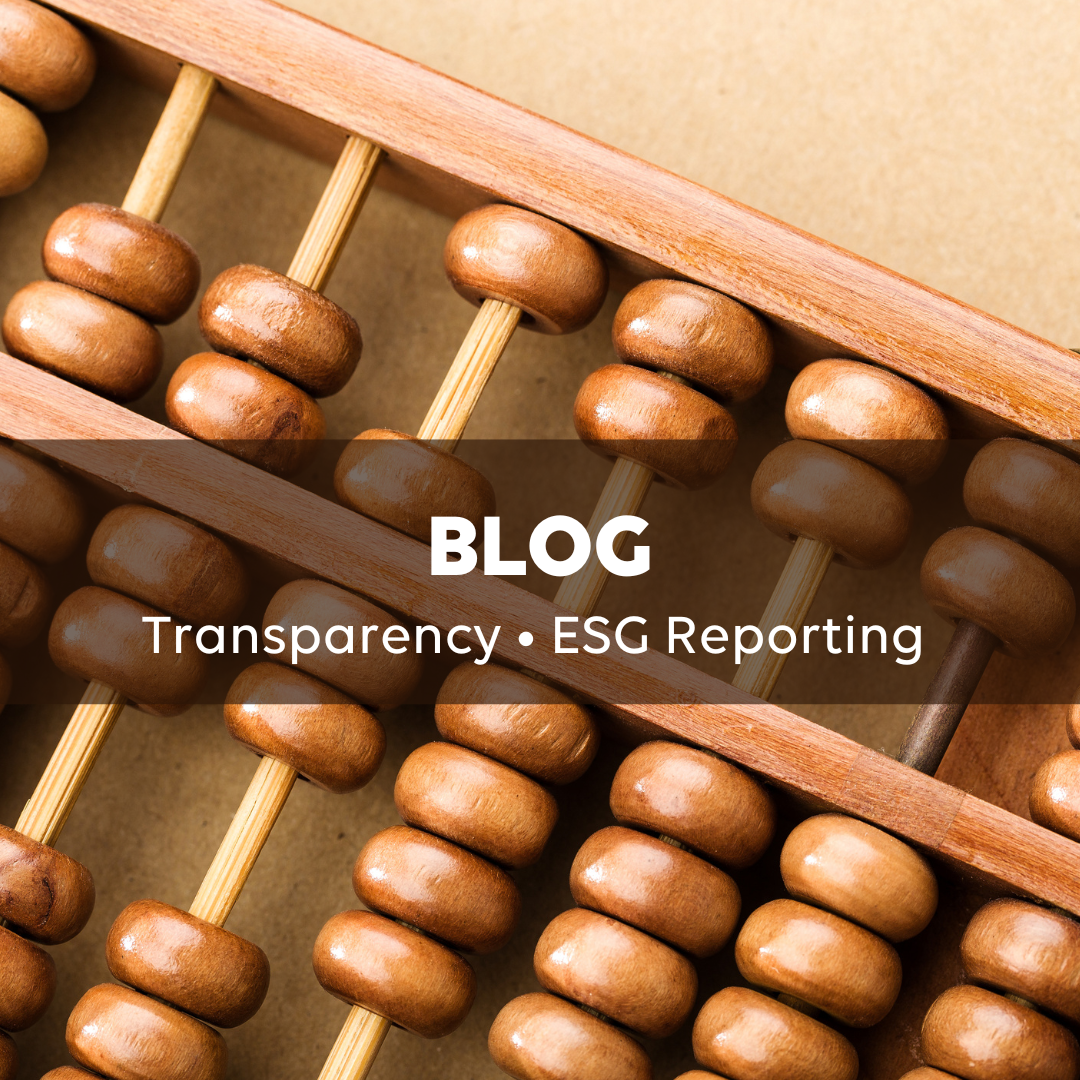The spreading wave of transparency: Updates on ESG reporting rules and standards
[May 2024] Around the world, governments have adopted or have launched the legal process to adopt rules on extra-financial ESG reporting by companies, a step towards greater transparency and accountability from companies. How has the global landscape evolved over the last year?

Analysis note of the Global Observatory of Climate Action
Author: Tania Martha Thomas, Research Officer at the Observatory
Date: May 2024
Summary:
- The long-expected US Securities Exchange Commission rules
- The widening reach of the International Sustainability Standards Board’s standards
- Double materiality reporting in Chinese markets
The increase in sustainability-related disclosure from companies, particularly since 2015, and the ongoing harmonisation of reporting has been largely driven by financial authorities.[1] Extra-financial reporting by companies is a critical component of managing and monitoring the transition towards a low-carbon economy, for both companies and the financial sector which is financing this shift.[2] As of early 2024, 71 stock exchanges from around the world – more than half – have some form of guidance on Environmental Social and Governance (ESG) disclosure, while 27 of them have mandatory rules.[3] According to calculation by the World Resources Institute, once all pending disclosure rules are in force, they will cover around 40% of the world economy.[4]
In 2023, the Climate Chance Observatory analysed three major projects to harmonise non-financial reporting standards:
- The European Sustainability Reporting Standards (ESRS) developed by the European Financial Reporting Advisory Group (EFRAG) as part of the Corporate Sustainability Reporting Directive (CSRD)
- The Climate-related Disclosure rules of the Securities and Exchange Commission (SEC) of the United States
- The IFRS Sustainability Disclosure Standards developed by the International Sustainability Standards Board (ISSB)
Following the analysis note on updates in the European context with the adoption of the Corporate Sustainability Due Diligence Directive which complements the CSRD, and the analyses mentioned below, this note will look at how the international context has since evolved.
The long-expected SEC rules
After a tumultuous two-year period of debate and several delays, the U.S. Securities and Exchange Commission approved the Enhancement and Standardization of Climate-Related Disclosure rules in March 2024. As their name suggests, these rules are limited to climate criteria, unlike the ESRS or the ISSB’s standards which cover all ESG criteria. They also differ from the European requirements, in that the SEC adopts a ‘single materiality approach’ – i.e., looking at how climate risks can impact the financial position of a company. The SEC considers information to be “material” if it has a significant impact on a reasonable investor’s buying or selling decisions. The primary objective of the new disclosure rules remains to inform investors of business risks arising from climate change.
These rules lay out the requirements for publicly listed companies to report on their climate-related risks could have a “material impact” on their business strategy, results of operations or financial condition. Actions taken to mitigate or adapt to such risks, including a transition plan, as well as climate-related targets that will have material impacts also need to be disclosed.[5]
After initial proposals that included GHG emission disclosures covering all three scopes, the final rules established the gradual phase-in of Scope 1 and 2 emission reporting requirements for large companies. The rules also require the reported emissions to be verified by a third party (“assurance”), though the degree of this assurance varies according to the company size and the phase-in. While this requirement will touch about 95% of US market capitalization through the large companies, it will only apply to about 40% of all domestic public companies.[6] Reporting is also limited to those emissions which are considered to be material.
The final rules have drawn criticisms and strong reactions from both ends: on the one hand, ten Republican states have sued the SEC that rules go beyond the SEC’s mandate, and beyond financial disclosure that is useful for investors; on the other hand, environmental groups like Sierra Club have sued the SEC, claiming that the rules do not go far enough.[7],[8] Meanwhile, certain states like California, and soon New York, have their own disclosure rules for companies, which are more demanding than the SEC’s requirements.[9]
The widening reach of the ISSB’s Standards
The IFRS standards developed by the International Sustainability Standards Board (ISSB) as a response to the request to standardize non-financial reporting frameworks made by the G20 and the International Organization of Securities Commissions (IOSCO), are private and voluntary. Their scope of application depends on whether they are adopted by national financial regulators wanting to refer to them to establish regulations. In terms of climate, the IFRS requires the publication of a transition plan, a resilience analysis, a set of metrics (Scope 1, 2 & 3 emissions, low-carbon investment expenditure, etc.), and targets with figures. These standards too have a single materiality approach, looking only at the impact of environmental factors on a company’s operations and business.
Part of a series of announcements including ones from Australia, Hong Kong and the UK, Brazil’s Securities and Exchange Commission adopted requirements based on the ISSB standards, that will go into effect from 2026 onwards.[10] More recently, countries like Canada, Japan, Malaysia, New Zealand, Philippines and Singapore have also started the process to establish mandatory sustainability reporting rules.[11], [12] The main differences between these countries have been in terms of timelines, and the degree of external assurance requirements. For instance, Australia and New Zealand will require basic assurance of Scope 1, 2 and 3 emissions, while the rules in Singapore are like the ones in the US, covering only scopes 1 and 2, and starting with limited assurance.
In February 2024, the ISSB announced that it planned to assess the degree of alignment with the IFRS standards of the jurisdictions that were choosing to implement the standards.[13] Following a guide for national policymakers that was published early 2024, the alignment assessments are meant to be part of “jurisdictional profiles” that the ISSB will develop. They will describe the deviations or modifications from the ISSB standards, which could hamper progress towards the uniformization of sustainability reporting.
Double materiality reporting in Chinese markets
Also in February 2024, China’s three largest stock exchanges – Shanghai, Shenzhen and Beijing – announced the publication of new guidelines for sustainability reporting for listed companies, applying to larger and dual-listed companies, starting from 2026.[14] Smaller and medium-sized enterprises will be covered by voluntary guidelines. While the announcement refers to “international standards” it does not specify which ones; nevertheless, the listed topics for reporting requirements indicate that the guidelines are taking the double materiality route, covering not only the impact of ESG factors on companies but also companies’ impacts on environment and society. On the climate side, it will also require Scope 3 emissions reporting.
The global economy thus seems to be converging towards greater regulation of ESG reporting by companies. The process has not been without obstacles, as seen in the cases of various concessions made to finally pass these laws around the world, and in the strong reactions they continue to provoke as anti-ESG backlash builds around the world.
References
[1] Gillod, A. (2023). Entreprises. Sur la route vers le net zéro, les entreprises ont trouvé la boussole mais pas la carte. Climate Chance.
[2] Observatoire de l’action climat non-étatique, Finance for Tomorrow (2022). Bilan mondial de la finance climat 2022. Climate Chance.
[3] IFC (n.d.). Understanding the Global Reporting Frameworks. Beyond the Balance Sheet, International Finance Corporation.
[4] Carter, A. (06/05/2024). Corporate Climate Disclosure Has Passed a Tipping Point. Companies Need to Catch Up. World Resources Institute.
[5] SEC (2024). The Enhancement and Standardization of Climate-Related Disclosures: Final Rules. [Factsheet]. U. S. Securities and Exchange Commission.
[6] Noor, D. (06/03/2024). US regulators approve significantly scaled back climate disclosure rule. The Guardian.
[7] Mindock, C. (06/03/2024). Republican-led states sue US SEC over climate risk disclosure rules. Reuters.
[8] Mindock, C. (15/03/2024). Sierra Club sues US SEC for weakening climate risk disclosure rules. Reuters.
[9] Carter, A. (2024). Corporate Climate Disclosure…, op. cit.
[10] Segal, M. (25/10/2023). Brazil to Require Mandatory Sustainability Reporting from 2026. ESG Today.
[11] FinTech Global (10/04/2024). Nations rally for sustainability with ISSB standards adoption. FinTech Global.
[12] See, G. (26/03/2024). From Big Four dominance to more oversight of assurance providers – what to look out for as Asia adopts ISSB standards. Eco-Business.
[13] McNally, F. & Verney, P. (26/02/2024). Standards round-up: ISSB to assess jurisdictions’ level of alignment with standards. Responsible Investor.
[14] Dumas, A. (17/02/2024). Reporting ESG : les entreprises cotées chinoises se préparent à divulguer leurs données de durabilité. Novethic.


